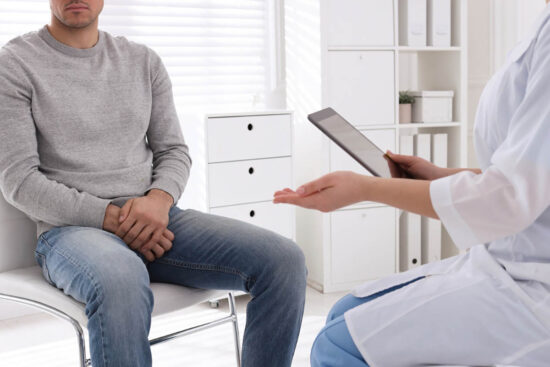What to do if you’re having a stroke
Learn to recognize stroke symptoms to save lives and improve recovery. Quick action can make all the difference.

- Stroke symptoms and what to do.
- Early intervention is key.
- Treatment and dianosis.
Being informed about what to do in the event of a stroke is vital, not just for healthcare professionals but for everyone.
Recognizing the signs early, knowing how to respond and ensuring prompt medical attention can significantly improve the chances of a successful recovery.
Your actions can help prevent long-term disabilities and provide stroke victims with a fighting chance at regaining their independence.
Before you continue reading, we invite you to listen to the new Crímenes de Terror podcast by clicking HERE.
Click on the image to listen to the podcast
 PHOTO MundoNOW
PHOTO MundoNOWIt’s critical to recognize stroke symptoms quickly and respond immediately.
Common signs include sudden numbness or weakness, particularly on one side of the body, confusion or difficulty understanding speech, trouble seeing and a sudden, severe headache.
Acting swiftly is vital because the sooner a stroke is treated, the better the chances are for a successful recovery and less damage to the brain.
The acronym FAST — Face drooping, Arm weakness, Speech difficulties and Time to call emergency service — is a handy reminder of the key symptoms.
Why acting quickly at the first sign of stroke symptoms is crucial

The moments following a stroke are incredibly critical because the brain cells begin to die from the lack of oxygen-rich blood.
The longer these cells are deprived of oxygen, the more extensive the damage to the brain, which can be life-threatening or lead to significant long-term disabilities.
A prompt response to stroke symptoms only has the potential to save the person’s life but also considerably improves their prospects for a successful rehabilitation.
Understanding this urgency can empower you to take immediate action, ensuring that the person affected receives medical attention as quickly as possible.
First steps to take during a stroke

In the event that you’re witnessing someone experiencing stroke symptoms, your immediate action should be to call emergency services without delay.
While waiting for professional help to arrive, it’s important to make the person as comfortable as possible.
Keep them calm and ensure they’re in a safe location, but avoid giving them any food or drink, which could lead to choking or other complications.
Monitor their symptoms and be ready to provide this information to the emergency responders upon their arrival.
The importance of medical intervention

Once the individual reaches the hospital, medical professionals will act quickly to determine the type of stroke and the most appropriate treatment.
The primary aim of these treatments is to restore blood flow to the affected part of the brain as efficiently as possible, minimizing brain damage and enhancing the chances of a successful recovery.
Early medical intervention is key to preventing further damage to the brain and can significantly improve the outcome for the stroke patient.
This level of care is essential in setting the stage for the recovery process and reducing the risk of long-term disabilities.
Rehabilitation and recovery

The road to recovery after a stroke usually involves a combination of physical, speech, and occupational therapies, tailored to the individual’s specific needs and the extent of the brain damage.
Physical therapy focuses on regaining as much strength and mobility as possible, while speech therapy aims to help the patient overcome any difficulties with communication.
Occupational therapy is essential for relearning basic daily activities and regaining a level of independence.
The support and encouragement from family, friends and healthcare professionals play a crucial role in the journey to recovery.
Recognizing stroke symptoms and preventing future strokes

Taking steps to prevent another stroke is just as important as the initial recovery, involving significant lifestyle changes and possibly medical interventions.
Adopting a healthier lifestyle by maintaining a balanced diet, engaging in regular physical activity, and eliminating smoking can drastically reduce the risk of a second stroke.
It’s also important for stroke survivors to regularly monitor their health, managing chronic conditions like hypertension or diabetes under a doctor’s supervision.
These preventative measures are key to reducing the likelihood of experiencing another stroke and maintaining overall health and well-being.
 Related post
Related post





